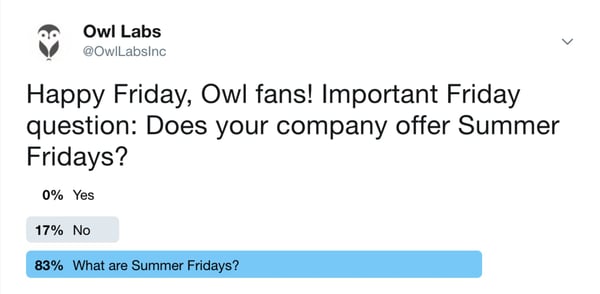Every year, summer seems to fly by. You squeeze in as many beach trips and cookouts as you can, but those sunny days are gone in a flash. While it can be challenging to take time off, especially with the pressures of work, it's more important than ever to take a break and recharge.
Despite the clear benefits, many American workers are still not using all their vacation time. According to a 2024 report by Sorbet, a fintech firm, nearly two-thirds of U.S. workers (62%) did not use all of their paid time off in 2023, resulting in a third of it going unused. A separate survey from Expedia found that vacation deprivation has reached an 11-year high in the U.S. Taking a break could benefit them in the long run, as it helps combat burnout and can lead to increased productivity and morale.
Whether your team is in-office, hybrid, or fully remote, both your employees and your company can benefit from this practice. It's a fantastic way to boost morale, increase productivity, and show your team you value their well-being.
What are Summer Fridays?
Summer Fridays are a type of flexible scheduling that allows employees to either leave the office early on Friday or take the entire day off. These summer hours are typically offered on the Fridays that fall between Memorial Day and Labor Day.
While some employers are hesitant to implement the practice, there are benefits to offering Summer Fridays. The primary concern is that offering time off on Fridays will negatively impact productivity. Brian Kropp, group vice president of the HR practice at Gartner, found that, " … offering your employees work-life balance can increase productivity, loyalty and employee retention." They might seem unconventional, but Summer Fridays can be a major perk for your employees.

How to implement a Summer Friday policy
Ready to bring Summer Fridays to your company? There are several ways to do it, and you can choose the policy that works best for your business, your employees, and your unique culture.
Here are a few popular types of Summer Friday policies:
1. The compressed workweek
With this model, employees work additional hours Monday through Thursday to earn their time off on Friday. They can track the extra hours they work and then take an equivalent amount of time off, whether that's a half-day or a full day. This approach ensures that all work gets completed while still providing the benefit of a shorter Friday.
2. Every Friday off
This is one of the more generous versions of the policy. All employees are given every Friday off during the summer. This provides a full day to handle errands, attend appointments, or simply get a head start on a long weekend. It's a powerful benefit that shows a deep commitment to employee well-being and work-life balance.
3. Every other Friday off
If giving every Friday off isn't feasible, consider staggering the schedule. For example, one half of the company takes the first Summer Friday off, and the other half takes the following Friday off. This ensures that there is always coverage and that business operations continue smoothly, while still allowing everyone to enjoy the perk.
4. Half-day Fridays
If your company can't afford to lose a full day of productivity each week, offering half-days is a great compromise. Employees work a shortened day, typically from the morning until lunchtime, and then are free to enjoy the rest of their afternoon. This is a popular and practical option that minimizes disruption while still providing a valuable benefit.
5. Flexible summer hours
Instead of restricting the time off to a specific day, you can offer a pool of "summer hours" that employees can use flexibly. For instance, you could grant a set number of hours that can be applied to any day of the week, allowing them to create a schedule that works best for their personal needs. This option is particularly appealing for a modern, remote workforce.
The benefits of a little rest
Summer Fridays give employees much-needed flexibility and allow them to make the most of the warmer months. Taking time to rest and recharge can help prevent burnout, increase job satisfaction, and improve focus for the final quarter of the year.
Ultimately, a well-rested team is a more productive and engaged team. As author John Lubbock once said, "Rest is not idleness, and to lie sometimes on the grass on a summer day listening to the murmur of water, or watching the clouds float across the sky, is hardly a waste of time."
Consider implementing a Summer Friday policy and encourage your team to take a break. It's a win-win for everyone involved.
Ready to explore other ways to improve work-life balance? Learn more about how to work from anywhere with the best practices for productivity and adaptation.
%20(1).png)
Better meetings start here
From huddle rooms to boardrooms and everything in between, we’ve got you covered with solutions that take teamwork to the next level.
Shop Solutions